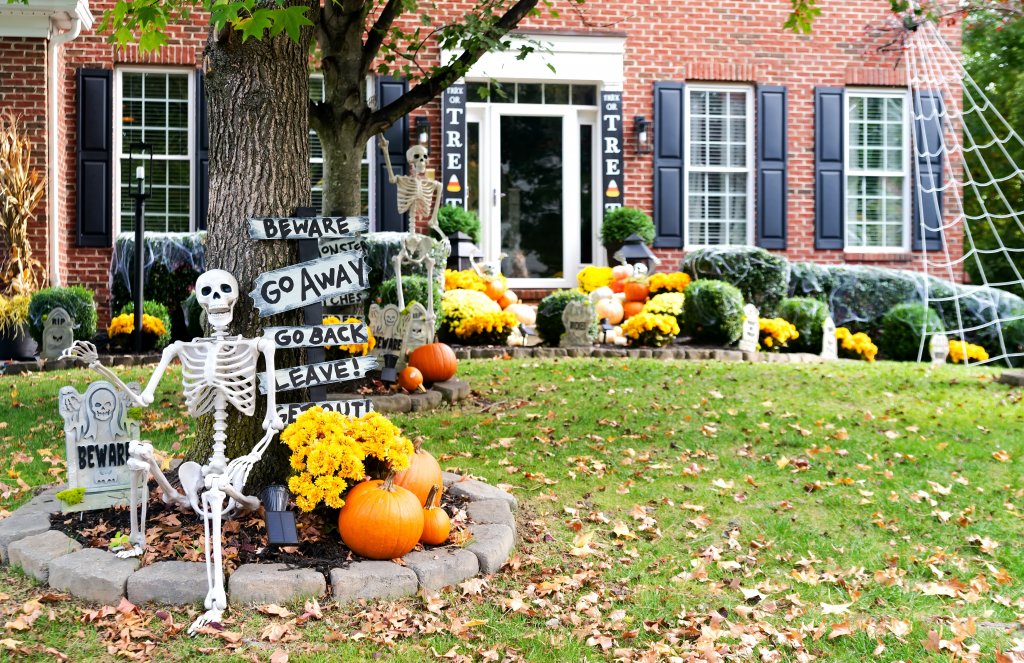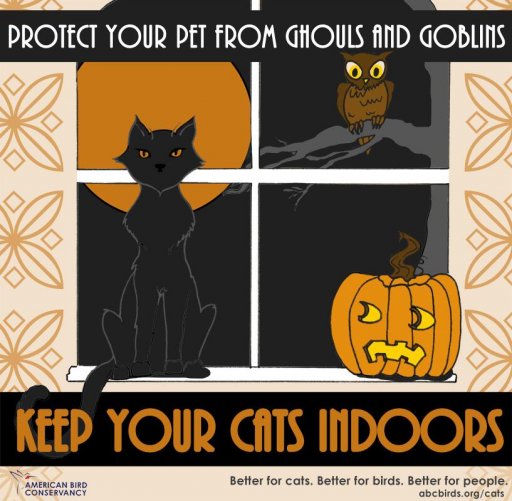Spooky Tips to Ensure Only Treats and No Tricks for Birds This Halloween

You may have noticed it. The chill in the air. The leaves crunching under your feet on your morning walk. Pumpkin spice proliferating on menus and grocery store shelves. Fall — or as many call it, “spooky season,” — has officially arrived.
For birds, fall can certainly be a spooky time of year. Many species wing their way south, some on epic journeys stretching thousands of miles, facing threats like window collisions, outdoor cats, hurricanes, and more along the way. Even those that don't migrate great distances are preparing for months with fewer resources and harsher weather.
As we humans pull our sweaters and decorations out of storage and prepare to welcome friends and family to our homes to celebrate the holidays, there are a few things that we can do to make our own homes welcoming to birds, too. Here are a few ways to make your yard less spooky for birds this season:
1. Avoid Using Sticky Traps to Catch Creepy Crawlies
We know it's tempting to reach for the sticky trap when you have unwanted pests (like the invasive Spotted Lantern Flies that have been damaging plants across the Northeastern U.S.) around your home. But sticky traps are a blunt instrument, and they can also catch critters you aren't targeting — including birds.
Instead consider a few alternative options. A solution of water and dish soap can be sprayed directly on unwanted insects for a more targeted approach. A vinegar solution can also work, though this might also harm the plant they are sitting on, so only spray it on weeds.
In autumn, you can go hunting for lanternfly egg masses to destroy before they hatch in the spring. These look like gray splotches of putty and can be scraped off surfaces into a container of rubbing alcohol.
Finally, if you are near a Spotted Lanternfly outbreak and feel you must use sticky traps, they are most effective in the spring when the lanternflies are in their nonflying nymph stage. Only get traps that can be wrapped around a tree trunk and covered with chicken wire to protect birds and small mammals from getting stuck.
2. Decorate Responsibly — Keep the Fake Spider Webs Inside the House
While yard decorations are a fun way to celebrate the holidays, some types of decor can be more disruptive to birds than others. The worst offenders are fake spider webs, which can act like a net that catches unsuspecting birds flying through your yard. The best thing to do is to keep these webs up against a surface where they are less likely to entangle flying birds, or better yet, display the webs on the inside of your window rather than the outside.
3. Stop Tricking Birds — Treat Your Windows
Windows reflect surrounding foliage, tricking birds into thinking the hard surface is a continuation of their habitat. This can have devastating consequences — up to 1 billion birds die from window collisions alone each year, with half of those incidents being at homes. And birds are most vulnerable during migration. To make sure your home is a safer place for birds this fall, treat your windows to a bird-friendly makeover.
Options like bird tape are affordable and easy to apply, and decals can add to your autumn decor while also protecting birds. Or, next time you're embarking on a home improvement project, you can go all-out and fit your home with ABC-approved bird-friendly glass. Finally, remember to turn out the lights at night to reduce the risk of confusing night migrants.

4. Remember That To a Bird, Your Beloved Pet is a Scary Monster
It can be hard to think of our cats and dogs as anything but our adorable fluffy companions, but to most birds, even a seven-pound cat is a lethal predator. In fact, free-roaming cats are the leading direct, human-caused threat to birds in the U.S., causing more than 2.4 billion estimated bird deaths each year.
ABC recommends always supervising your pets when they are outside, for their safety and the birds. It's important to keep dogs and cats' movements in particular contained with a harness and leash or a variety of other options including catios, backpacks, and strollers. This will help ensure that a bird's pitstop in your yard isn't the last stop it ever makes.
###
American Bird Conservancy is a nonprofit organization dedicated to conserving wild birds and their habitats throughout the Americas. With an emphasis on achieving results and working in partnership, we take on the greatest problems facing birds today, innovating and building on rapid advancements in science to halt extinctions, protect habitats, eliminate threats, and build capacity for bird conservation. Find us on abcbirds.org, Facebook, Instagram, and Twitter (@ABCbirds).
Media Contact: Jordan Rutter, Director of Communications| media@abcbirds.org


















































